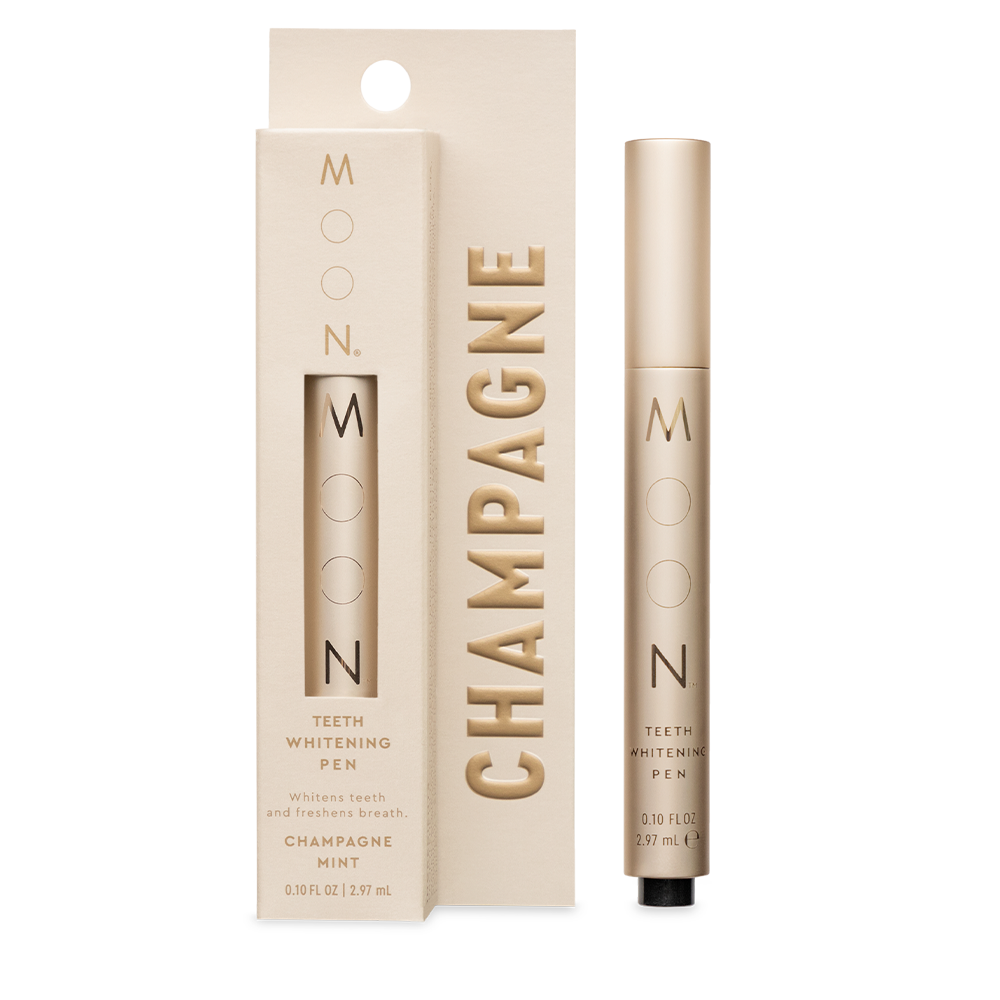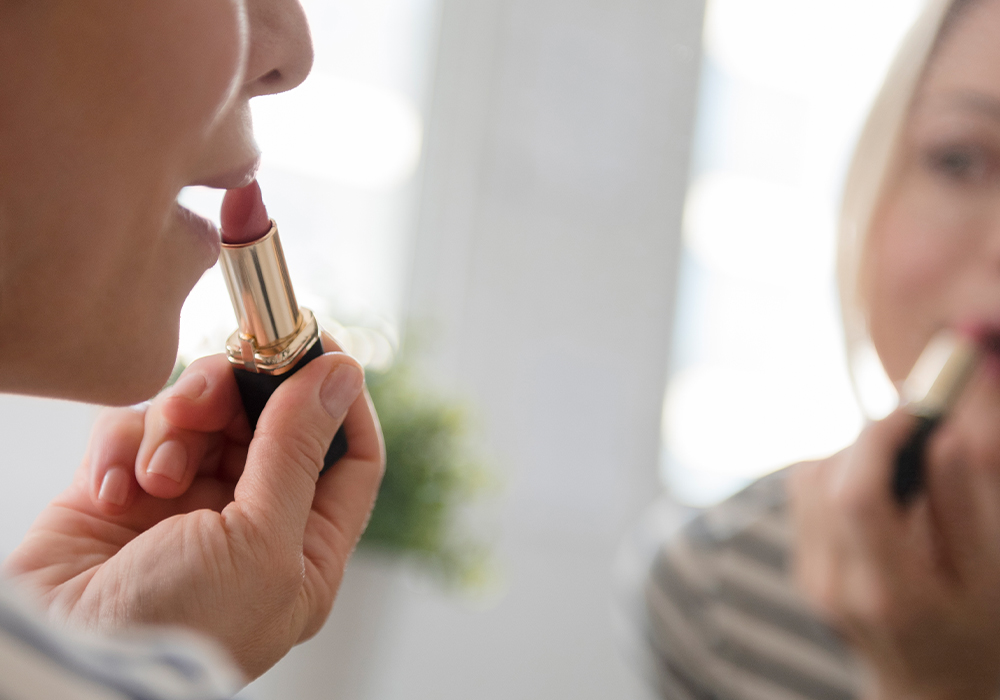If you’ve ever had Kool-Aid, Fun Dip or Jolly Ranchers, then you’ve also experienced the dye job they leave behind on your teeth and tongue. While it’s quite obvious that blue or red candy can temporarily stain your smile, it may not be as apparent that foods you’re eating on a daily basis can have a similar, more permanent staining effect. Ahead, top cosmetic dentists break down the foods that are staining your teeth without you even knowing it.
According to Atlanta cosmetic dentist Ronald Goldstein, DDS, there are two types of stains: surface stains, which can be professionally polished off by your hygienist, and internal staining, which means the stain has been absorbed by your enamel. “But, before thinking about foods that tend to stain teeth, take a deeper look at what your enamel looks like,” he says. “Is it shiny or dull? Are there fillings that show in the front of your mouth? Are your front teeth bonded with composite resin? A rule of thumb is that shiny enamel tends to stain less and dull enamel tends to be more susceptible to food stains.” No matter what the circumstances may be, there are many ways—both at-home and in the office—to get your teeth looking bright and shiny again.
Dark Liquids
Sarasota, FL cosmetic dentist Jenifer C. Back, DMD says that liquids stain a larger surface area than solid foods, especially if they’re dark in color. A few under-the-radar culprits: soy sauce, balsamic vinegar and black tea. “When it comes to dark drinks like coffee and wine, it’s difficult to tell patients to stop consuming them,” adds Los Altos, CA cosmetic dentist Joseph Field, DDS. “Instead, I tell my patients to consume their drinks quickly rather than slowly sipping. This gives the saliva a chance to protect the teeth from discoloration.”
Seasonings
Popular in the wellness space, turmeric can actually be a big culprit for stains, along with other yellow spices like mustard powder, says New York cosmetic dentist Irene Grafman, DDS. Though the spice has actually been touted as a teeth-whitener on social media, the American Dental Association says there’s no proof of such. To avoid any potential discoloration, Dr. Field suggests consuming the ingredient in tablet form whenever possible.
Pasta Sauce
According to New York cosmetic dentist Jason Kasarsky, DDS, tomato-based sauces that are rich in color can stain teeth, too. “Acids from tomatoes can cause the enamel to become more porous, making teeth more susceptible to absorbing liquid,” he says. “Opt for a lighter tomato sauce instead of a dark one. Simply adding a dash of cream or milk to your sauces can balance out the acids in the tomatoes, lighten the color and make your teeth less prone to stains.”
Fruits and Vegetables
While consuming fruits and vegetables is a crucial part of a well-balanced diet, dark fruits and veggies like pomegranates, cherries and beets can leave stains behind. “If you eat berries every day, you’re not going to have blue teeth, but you will slowly notice shade differences,” says Dr. Kasarsky, who explains that darker foods (even smoothies) can stain teeth gray or brown.
Hemp
“One source of staining that has become common as laws change is marijuana because, like tobacco, it leaves a very dark, sticky stain,” Dr. Back says. But, before marijuana became legal in some states, CBD was all the rage. While it may have a positive effect on mental health, “the problem with CBD oil is that it contains high levels of iron, which can stain the teeth,” adds Dr. Goldstein. “Even CBD gummies can stick to enamel and attract stains.“
Bright Future
While anything that has pigment can stain the teeth, there are plenty of ways to avoid a fading smile, both at home and in the dentist’s chair.
Brush up
“An easy way to bash stains before they affect the color of your teeth is by quickly brushing after each meal,” says Dr. Field, who recommends adding a dash of baking soda to your toothpaste for a good enamel exfoliation. “But, don’t do it on a regular basis. If baking soda is used every day, it can start to remove the enamel and make the teeth less shiny and more porous. When used as needed, it can help break down some of the stain and scrub it off the teeth.”
Rinse it out
Dr. Kasarsky finds it hard to get patients to brush after each meal, so the next best thing is rinsing the mouth, but, he doesn’t recommend using the typical mint mouthwash. “Apple cider vinegar has a PH of about 5 percent, and because it’s slightly acidic, it helps break down plaque. Mix about a teaspoon of it into your water bottle and swish it around throughout the day and after your meals—it will keep your teeth looking clean and fresh and will prevent darkening.” If you don’t have apple cider vinegar, Rockville, MD cosmetic dentist Joe Kravitz, DDS recommends, “rinsing your mouth out with water within seven minutes of consuming a staining food to reduce and eliminate stains.”
White cast
Most over-the-counter whitening products, from whitening strips to whitening toothpaste, are safe to use at home, as long as your teeth don’t have any decay and instructions are followed,” says Dr. Grafman. But, before you add them to your cart, Dr. Kasarsky advises home-dwellers to consult a dentist first in order to find the best option for their specific smile. “While it’s more expensive than drugstore products, you can always visit a dental office to have bleaching trays made for at-home use. This is much more effective than OTC products because it will speed up the process by about three months.”
Professional bleaching
“While bleaching with at-home trays is both easy and effective, Dr. Goldstein says a higher concentration of hydrogen peroxide or carbamide peroxide can be used during in-office bleaching. “This is because the gums will be protected with a rubber dam,” he explains. “If the teeth are very dark, multiple treatments may be required.”
When it comes time for an appointment, Dr. Goldstein says it takes about an hour or more. “First, a rubber dam will be applied tightly around each of the teeth to be treated. Then, bleach is applied onto a thin piece of gauze to hold it in place. At the end of the appointment, the gauze and rubber dam are removed and the teeth are polished.” Dr. Kravitz says the treated teeth are usually those within the smile line, or ones you can see in the mirror.
The shade of your teeth will come in 92 hours after your bleaching treatment when they’re no longer dried out.
—Dr. Ronald Goldstein
For moderate-to-severe stains, Wellington, FL cosmetic dentist Sam S. Sadati, DDS likes to combine in-office whitening with his favored bleaching technique, at-home bleaching trays, which he believes produce longer-lasting results. “Too much in-office bleaching can dehydrate the teeth, so supplementing office visits with at-home tools is my preferred way of whitening the smile.”
Another in-office remedy for staining is Zoom whitening. “This is a one-time treatment that uses hydrogen peroxide at a much higher concentration than any OTC product,” says Dr. Field. “It’s so powerful that it can whiten teeth by a few shades.” It’s typically around $600 for one in-office session, but the company just partnered with clear aligner brand Candid to bring professional whitening to your home for half the price.

Porcelain Veneers
Dr. Goldstein says that if teeth are a blue or gray color, which are the hardest shades to treat with whitening products, they may need a treatment that will both lighten the shade of the teeth and protect them from future stains.
“Veneers are made of porcelain and are very resistant to stains,” says Dr. Back. “While some sticky residues can accumulate around veneers, they cannot penetrate porcelain like they canorganic teeth. Patients choose veneers for many cosmetic reasons, such as tooth color that doesn’t respond well to whitening, an uneven or crooked tooth shape, and malposition of teeth.”























